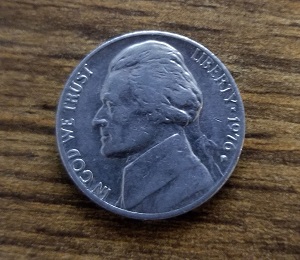
Photo credit: jb
This is one of those subjects that can be a bit confusing – and it’s based on the rules that apply to the different kinds of plans, as well as different kinds of beneficiaries. You are aware that you’re required* to begin taking Required Minimum Distributions (RMDs) once you reach age 70½ – no wait, 72 – whoops now it’s 73*** – but did you know that specifically which account you take the RMD from has some flexibility? Well – not only flexibility, also some rigidity…
There is a Difference Between IRA and 401(k)
Starting off, we need to understand that, in the IRS’s eyes, there is a big difference between an IRA and a 401(k). For brevity, we’re referring to all sorts of Qualified Retirement Plans, such as 403(b)** or 457 plans, as 401(k) plans. You may consider the two things to be more or less equal, but if you think about it, there are considerable differences between an IRA and a 401(k) – amounts you can fund the account with each year, catch-up arrangements, who can defer funds into each kind of plan, and the list goes on.
A 401(k) plan, being an employer-provided retirement plan, has a completely different set of rules governing it – including provisions that go all the way back to the original ERISA legislation. Among those rules are the rules about RMDs.
On the other hand, the IRA is not covered by ERISA, and as such there are other rules that apply to these arrangements – including the RMDs.
We don’t have nearly enough space here to go over everything that is different between these two types of plans, but we’ll cover the RMD treatment.
Required Minimum Distributions (RMD)
Each and every 401(k) plan* that you own is treated as a separate account in the eyes of the IRS. As such, if you have four old 401(k) plans when you reach age 73, you will have to calculate and take a separate RMD from each 401(k) plan that you have. In other words, you couldn’t aggregate all the plans together and take one RMD from one of the accounts that is large enough to cover all the RMDs. In addition, you have to consider each account separately and figure out how much of each RMD is taxable, if you happen to have post-tax dollars in the account(s).
However, no matter how many IRAs that you have, the IRS looks at all of these plans as one single plan, so you are allowed to pool all of the account balances together, calculate the RMD amount, and then withdraw that amount any single IRA account or any combination of accounts. Your tax basis is aggregated as well (if you have non-deducted contributions in the accounts), so the tax treatment is a consideration for the entire pool of your IRAs in total (rather than account by account as is the case with 401(k) plans).
Example
You have two old 401(k) plans and three IRAs. This is your year, you’ve reached age 73, so you have to start taking RMDs. How do you do it for these five accounts?
Each 401(k) plan’s RMD has to be calculated separately – and a RMD taken directly from each account. But you can pool the IRA account balances together, calculate and take one RMD from one of the accounts that is large enough to cover all three accounts’ minimum distribution. Or from multiple accounts if you wish, as long as the total of your distributions is at least as much as the RMD amount calculated for all of your IRAs.
This is another reason why it can be helpful (from a paperwork standpoint, if nothing else) to rollover your old 401(k) plans into IRAs. By doing this, you don’t have to take a distribution from, in the case of the example above, three different accounts at a minimum.
* Note: if you are still working after age 73 and you’re not a 5% or more owner of the company and your 401(k) plan allows it, you may not be required to take RMDs from the account. This is yet another difference between IRAs and 401(k)s with regard to distributions.
**Also – specifically for 403(b) accounts – you may aggregate all of your 403(b) accounts together for RMD calculation and distribution.
***Lastly, the switcheroo about the age to begin RMDs is the result of the SECURE Act(s) – as of 2023 the RMD age is 73, and will remain so until 2033.